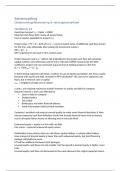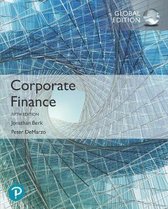College aantekeningen
Samenvatting van alle colleges O&V (Corporate Finance Hoofdstuk 14-30)
- Instelling
- Tilburg University (UVT)
Samenvatting van alle colleges van het vak Ondernemingsfinanciering & Vermogensmarkten (O&V). Gebaseerd op het boek Corporate Finance Hoofdstuk 14-30 (19, 22 & 29 behoren niet tot de stof)
[Meer zien]





